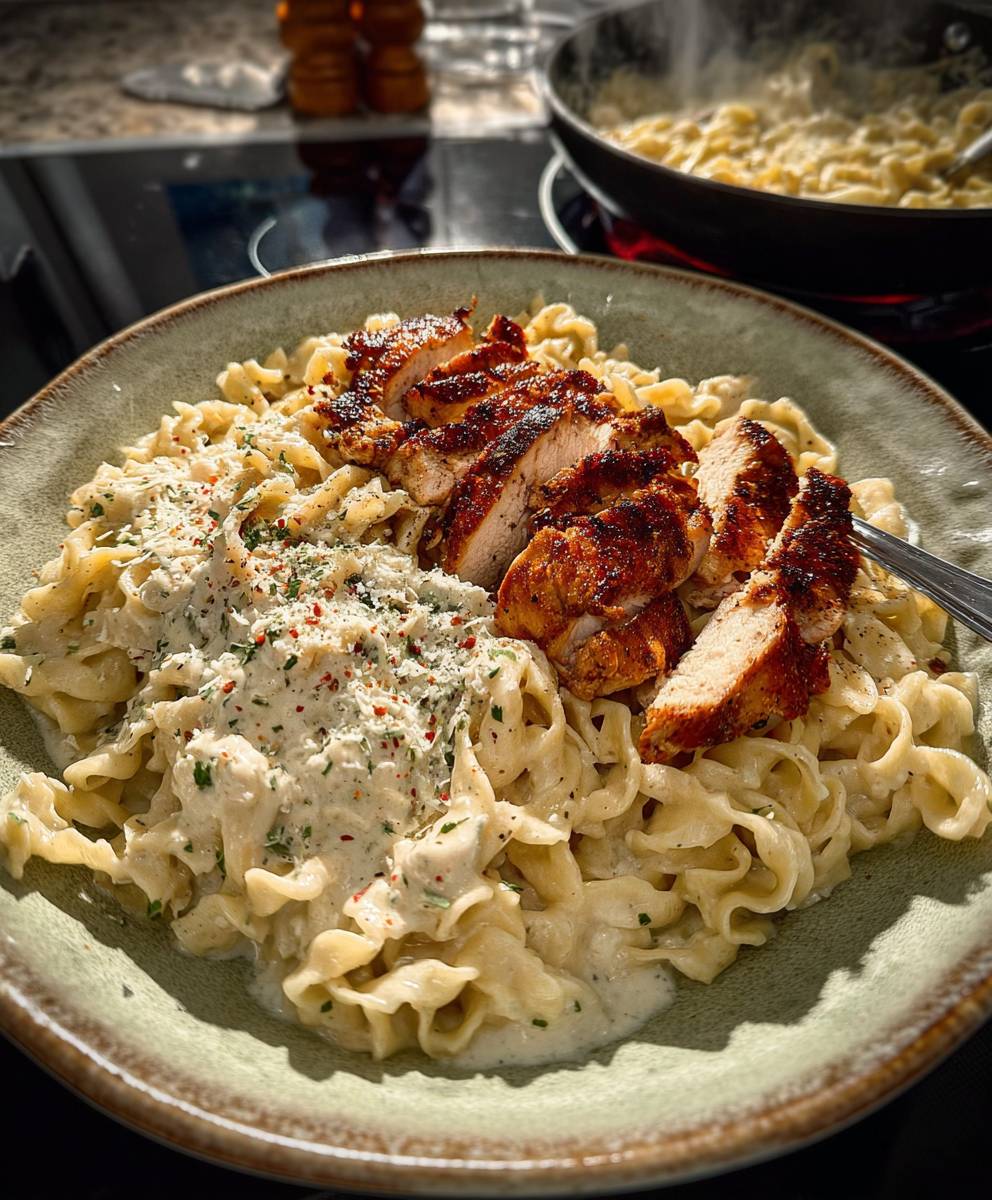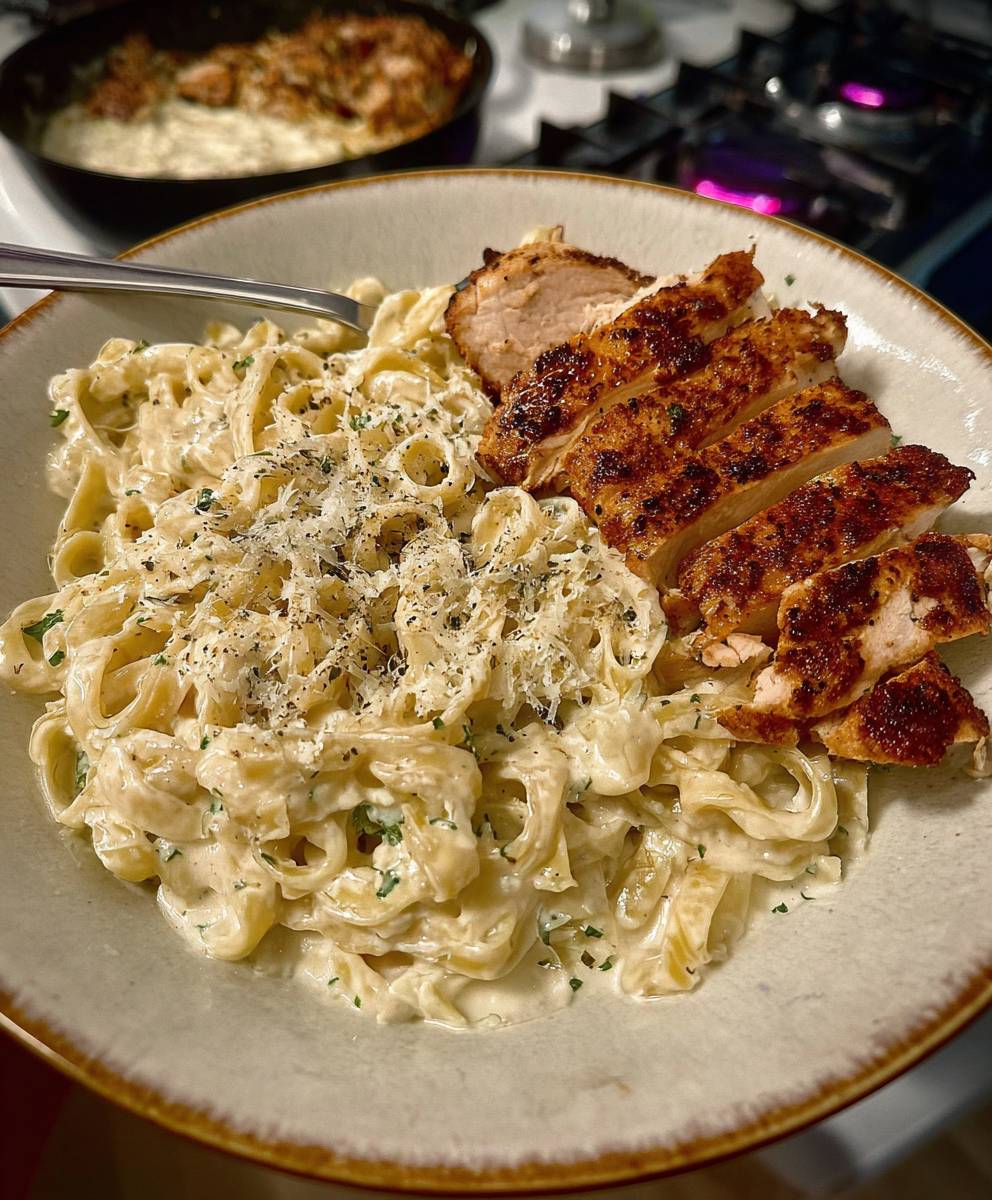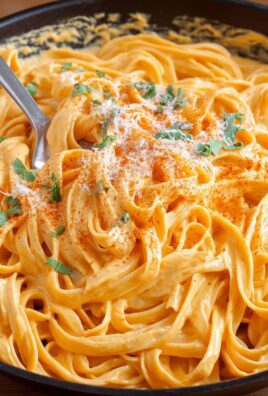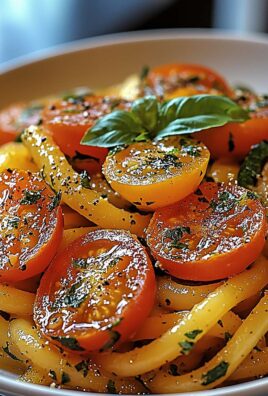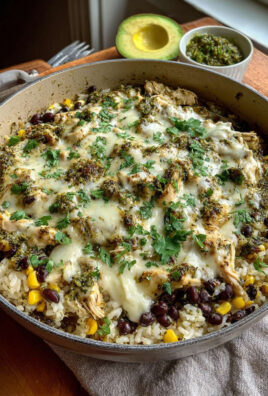Creamy White Sauce Pasta: Just the name conjures up images of comforting, velvety goodness, doesn’t it? I’m thrilled to share this recipe with you because it’s a dish that’s not only incredibly delicious but also surprisingly simple to make. Forget those jarred sauces – once you taste the difference a homemade white sauce makes, you’ll never go back!
The origins of white sauce, also known as béchamel, can be traced back to Italy, but it was later refined and popularized in France. It’s considered one of the five “mother sauces” of French cuisine, a testament to its versatility and foundational importance. Over the centuries, it has evolved and adapted, finding its way into countless dishes around the world, including our beloved creamy white sauce pasta.
What is it about this dish that makes it so universally appealing? Perhaps it’s the luxurious texture of the sauce, clinging perfectly to every strand of pasta. Or maybe it’s the rich, buttery flavor that’s both comforting and satisfying. Whatever the reason, creamy white sauce pasta is a guaranteed crowd-pleaser, perfect for a quick weeknight dinner or an elegant weekend meal. It’s also incredibly adaptable – feel free to add your favorite vegetables, proteins, or cheeses to create your own signature version. So, let’s get cooking and create some pasta magic!
Ingredients:
- 1 pound pasta (such as fettuccine, spaghetti, or penne)
- 6 tablespoons butter
- 6 tablespoons all-purpose flour
- 4 cups milk (whole milk or 2% recommended for richness)
- 1/2 teaspoon salt, or to taste
- 1/4 teaspoon black pepper, or to taste
- 1/4 teaspoon nutmeg (optional, but highly recommended)
- 1 cup grated Parmesan cheese, plus more for serving
- 2 cloves garlic, minced (optional, for garlic white sauce)
- Fresh parsley, chopped (for garnish)
- Optional additions: cooked chicken, shrimp, vegetables (broccoli, spinach, mushrooms)
Preparing the Pasta:
- Bring a large pot of salted water to a boil. This is crucial! The salt seasons the pasta from the inside out. Use a generous amount of salt – it should taste like the sea.
- Add the pasta to the boiling water. Stir immediately to prevent sticking.
- Cook the pasta according to package directions. Aim for al dente – slightly firm to the bite. This ensures the pasta holds its shape and texture when combined with the sauce. Overcooked pasta will become mushy.
- Reserve about 1 cup of pasta water before draining. This starchy water is liquid gold! It helps to create a creamy, emulsified sauce that clings beautifully to the pasta.
- Drain the pasta in a colander. Do not rinse the pasta unless you are not using it immediately. Rinsing removes the starch that helps the sauce adhere.
Making the Creamy White Sauce (Béchamel):
- Melt the butter in a large saucepan over medium heat. Use a heavy-bottomed saucepan to prevent scorching. Watch the butter carefully; you want it melted and bubbly, but not browned.
- Add the flour to the melted butter. Whisk constantly for about 1-2 minutes to create a roux. This is the foundation of your white sauce. The roux should be smooth and pale golden in color. This step is important to cook out the raw flour taste.
- Gradually whisk in the milk, about 1/2 cup at a time. This is the key to a smooth, lump-free sauce. Whisk continuously after each addition, ensuring the milk is fully incorporated before adding more. If lumps do form, don’t panic! You can use an immersion blender later to smooth them out.
- Continue whisking until the sauce thickens. This will take about 5-7 minutes. The sauce should be thick enough to coat the back of a spoon. You’ll know it’s ready when you can run your finger across the back of the spoon and the line holds its shape.
- Reduce the heat to low and simmer for 2-3 minutes. This allows the sauce to fully thicken and the flavors to meld together. Stir occasionally to prevent sticking.
- Stir in the salt, pepper, and nutmeg (if using). Taste and adjust seasonings as needed. Remember, you can always add more, but you can’t take it away!
- Stir in the grated Parmesan cheese. Mix until the cheese is melted and the sauce is smooth and creamy. The Parmesan adds a wonderful nutty, savory flavor to the sauce.
- (Optional) Add minced garlic to the butter before adding the flour. Sauté the garlic for about 30 seconds until fragrant, being careful not to burn it. This will infuse the white sauce with a delicious garlic flavor.
Combining Pasta and Sauce:
- Add the drained pasta to the saucepan with the white sauce. Toss gently to coat the pasta evenly with the sauce.
- If the sauce is too thick, add a little of the reserved pasta water. Start with a few tablespoons at a time, tossing until the desired consistency is reached. The pasta water helps to thin the sauce and create a beautiful, glossy finish.
- (Optional) Add any desired additions, such as cooked chicken, shrimp, or vegetables. Toss to combine and heat through.
- Serve immediately. Garnish with fresh parsley and extra grated Parmesan cheese.
Tips for the Perfect Creamy White Sauce Pasta:
- Use high-quality ingredients. The better the ingredients, the better the flavor of the final dish.
- Don’t rush the roux. Cooking the flour properly is essential for a smooth, lump-free sauce.
- Whisk constantly. This is the key to preventing lumps from forming in the sauce.
- Use the reserved pasta water. This starchy water is a secret weapon for creating a creamy, emulsified sauce.
- Taste and adjust seasonings as needed. Don’t be afraid to experiment with different herbs and spices to create your own unique flavor.
- For a richer sauce, use heavy cream instead of milk. This will result in a decadent and indulgent dish.
- To prevent a skin from forming on the sauce while it sits, place a piece of plastic wrap directly on the surface of the sauce. This will create an airtight seal and prevent the sauce from drying out.
- If your sauce is too thick, add more milk or pasta water. If it’s too thin, simmer it for a few more minutes to allow it to thicken.
- Don’t overcook the pasta. Al dente pasta will hold its shape and texture better when combined with the sauce.
- Serve immediately for the best flavor and texture. White sauce pasta is best enjoyed fresh.
Variations:
- Chicken Alfredo: Add cooked chicken breast to the pasta and sauce.
- Shrimp Alfredo: Add cooked shrimp to the pasta and sauce.
- Vegetable Alfredo: Add your favorite vegetables, such as broccoli, spinach, or mushrooms, to the pasta and sauce.
- Garlic Alfredo: Add minced garlic to the butter before adding the flour.
- Spicy Alfredo: Add a pinch of red pepper flakes to the sauce for a little heat.
- Mushroom Alfredo: Sauté sliced mushrooms in butter before adding the flour.
- Pesto Alfredo: Stir in a spoonful of pesto to the sauce for a burst of fresh flavor.
- Smoked Salmon Alfredo: Add flaked smoked salmon to the pasta and sauce.
- Sun-Dried Tomato Alfredo: Add chopped sun-dried tomatoes to the pasta and sauce.
- Lobster Alfredo: Add cooked lobster meat to the pasta and sauce for a truly decadent meal.
Troubleshooting:
- Lumpy Sauce: If your sauce is lumpy, try using an immersion blender to smooth it out. You can also strain the sauce through a fine-mesh sieve.
- Sauce Too Thick: Add more milk or pasta water to thin the sauce.
- Sauce Too Thin: Simmer the sauce for a few more minutes to allow it to thicken.
- Bland Sauce: Add more salt, pepper, or Parmesan cheese to enhance the flavor.
- Pasta Sticking Together: Make sure to use enough water when cooking the pasta and stir it frequently to prevent sticking.
Storage:
Leftover creamy white sauce pasta can be stored in an airtight container in the refrigerator for up to 3 days. Reheat gently on the stovetop or in the microwave, adding a little milk or water if needed to thin the sauce. The sauce may thicken upon refrigeration, so you might need to adjust the consistency when reheating. Keep in mind that the pasta may become softer upon reheating.
Nutritional Information (approximate, per serving):
Note: Nutritional information can vary based on specific ingredients and portion sizes.
- Calories: 600-800
- Fat: 30-40g
- Saturated Fat: 18-25g
- Cholesterol: 100-150mg
- Sodium: 500-800mg
- Carbohydrates: 60-80g
- Fiber: 3-5g
- Sugar: 5-10g
- Protein: 20-30g
Enjoy your homemade creamy white sauce pasta! I hope you find this recipe helpful and delicious. Feel free to experiment with different variations and additions to create your own signature dish.
Conclusion:
And there you have it! This Creamy White Sauce Pasta recipe isn’t just another pasta dish; it’s a comforting, flavorful experience that’s surprisingly easy to create. I truly believe this will become a staple in your kitchen, a go-to meal for busy weeknights or a cozy weekend dinner. The richness of the sauce, combined with perfectly cooked pasta, is a symphony of textures and tastes that will leave you wanting more.
Why is this a must-try? Well, beyond its simplicity, it’s incredibly versatile. You can customize it to your heart’s content! Feeling adventurous? Add some sautéed mushrooms and spinach for an earthy, nutrient-packed twist. Craving a bit of heat? A pinch of red pepper flakes will do the trick. Want to elevate it further? Toss in some grilled chicken or shrimp for a complete and satisfying meal. The possibilities are truly endless, making this recipe a blank canvas for your culinary creativity.
But the real magic lies in the sauce itself. It’s creamy, decadent, and coats every strand of pasta perfectly. It’s the kind of sauce that makes you want to lick the plate clean (and I won’t judge if you do!). The balance of flavors is just right, not too heavy, not too bland, but perfectly balanced to create a truly memorable dish.
Speaking of serving suggestions, this Creamy White Sauce Pasta pairs beautifully with a simple side salad. The freshness of the greens and the acidity of the dressing will cut through the richness of the pasta, creating a well-rounded meal. Garlic bread is also a classic accompaniment, perfect for soaking up every last drop of that delicious sauce. For a lighter option, consider serving it with steamed broccoli or asparagus.
And don’t forget the cheese! A generous sprinkle of freshly grated Parmesan cheese is a must, but you can also experiment with other cheeses like Pecorino Romano or Asiago. Each cheese will add its own unique flavor profile, adding another layer of complexity to the dish.
I’m so confident that you’ll love this recipe, and I can’t wait to hear about your experiences. So, gather your ingredients, put on some music, and get ready to create a truly unforgettable meal. Remember, cooking should be fun and relaxing, so don’t be afraid to experiment and make it your own.
Once you’ve tried this Creamy White Sauce Pasta, I encourage you to share your creations with me! Post a picture on social media and tag me, or leave a comment below letting me know how it turned out. Did you make any variations? What did you serve it with? I’m always eager to learn from my readers and see how you’ve put your own spin on my recipes. Your feedback is invaluable, and it helps me to continue creating recipes that you’ll love.
So, go ahead, give it a try! I promise you won’t be disappointed. This Creamy White Sauce Pasta is a guaranteed crowd-pleaser, and it’s sure to become a family favorite. Happy cooking!
Creamy White Sauce Pasta: The Ultimate Guide to Making It Perfect
Classic, creamy Parmesan white sauce pasta (Béchamel). Simple, satisfying, and perfect as is or with chicken, shrimp, or vegetables.
Ingredients
- 1 pound pasta (such as fettuccine, spaghetti, or penne)
- 6 tablespoons butter
- 6 tablespoons all-purpose flour
- 4 cups milk (whole milk or 2% recommended for richness)
- 1/2 teaspoon salt, or to taste
- 1/4 teaspoon black pepper, or to taste
- 1/4 teaspoon nutmeg (optional, but highly recommended)
- 1 cup grated Parmesan cheese, plus more for serving
- 2 cloves garlic, minced (optional, for garlic white sauce)
- Fresh parsley, chopped (for garnish)
- Optional additions: cooked chicken, shrimp, vegetables (broccoli, spinach, mushrooms)
Instructions
- Bring a large pot of salted water to a boil. Use a generous amount of salt – it should taste like the sea.
- Add the pasta to the boiling water. Stir immediately to prevent sticking.
- Cook the pasta according to package directions. Aim for al dente – slightly firm to the bite.
- Reserve about 1 cup of pasta water before draining.
- Drain the pasta in a colander. Do not rinse the pasta unless you are not using it immediately.
- Melt the butter in a large saucepan over medium heat.
- Add the flour to the melted butter. Whisk constantly for about 1-2 minutes to create a roux. The roux should be smooth and pale golden in color.
- Gradually whisk in the milk, about 1/2 cup at a time. Whisk continuously after each addition, ensuring the milk is fully incorporated before adding more.
- Continue whisking until the sauce thickens. This will take about 5-7 minutes. The sauce should be thick enough to coat the back of a spoon.
- Reduce the heat to low and simmer for 2-3 minutes. Stir occasionally to prevent sticking.
- Stir in the salt, pepper, and nutmeg (if using). Taste and adjust seasonings as needed.
- Stir in the grated Parmesan cheese. Mix until the cheese is melted and the sauce is smooth and creamy.
- (Optional) Add minced garlic to the butter before adding the flour. Sauté the garlic for about 30 seconds until fragrant, being careful not to burn it.
- Add the drained pasta to the saucepan with the white sauce. Toss gently to coat the pasta evenly with the sauce.
- If the sauce is too thick, add a little of the reserved pasta water. Start with a few tablespoons at a time, tossing until the desired consistency is reached.
- (Optional) Add any desired additions, such as cooked chicken, shrimp, or vegetables. Toss to combine and heat through.
- Serve immediately. Garnish with fresh parsley and extra grated Parmesan cheese.
Notes
- Use high-quality ingredients for the best flavor.
- Don’t rush the roux. Cooking the flour properly is essential for a smooth sauce.
- Whisk constantly to prevent lumps.
- The reserved pasta water is key to a creamy, emulsified sauce.
- Taste and adjust seasonings as needed.
- For a richer sauce, use heavy cream instead of milk.
- To prevent a skin from forming on the sauce while it sits, place a piece of plastic wrap directly on the surface of the sauce.
- If your sauce is too thick, add more milk or pasta water. If it’s too thin, simmer it for a few more minutes to allow it to thicken.
- Don’t overcook the pasta. Al dente pasta will hold its shape and texture better when combined with the sauce.
- Serve immediately for the best flavor and texture.

